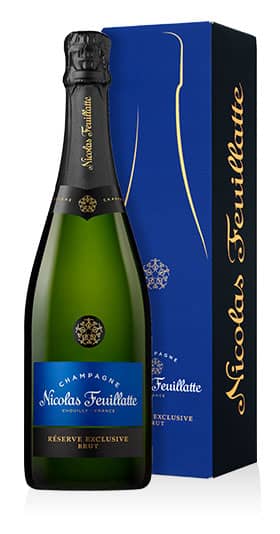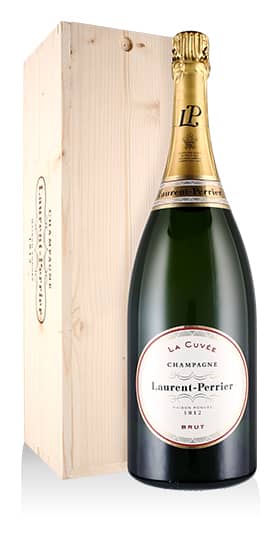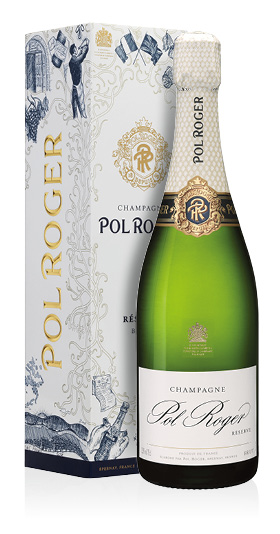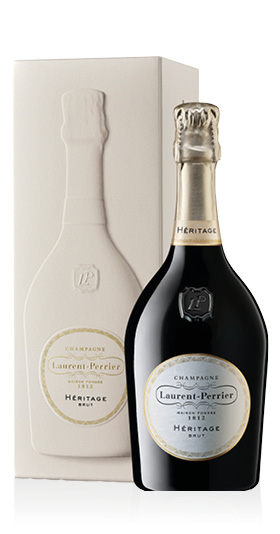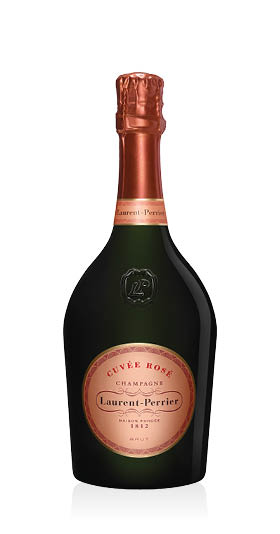Champagne AOC Brut Spéciale Réserve Veuve Leroy
0,75 ℓ
Discount 25%
22.40 €
per bottle
(0,75 ℓ)
29.87 €/ℓ
incl. VAT and taxes
Lowest price:
29.90 €
Champagne AOC Brut Réserve Pol Roger
0,75 ℓ
91
90
Discount 9%
48.60 €
per bottle
(0,75 ℓ)
64.80 €/ℓ
incl. VAT and taxes
Lowest price:
53.50 €
Running low on stock
Champagne Brut AOC Réserve Exclusive Nicolas Feuillatte
0,75 ℓ, Gift box
91
90
Discount 20%
35.80 €
per bottle
(0,75 ℓ)
47.73 €/ℓ
incl. VAT and taxes
Lowest price:
44.80 €
Running low on stock
Champagne AOC Brut La Cuvée Laurent-Perrier
Magnum 1,5 ℓ, Wooden box
91
91
112 €
per bottle
(1,5 ℓ)
74.67 €/ℓ
incl. VAT and taxes
Free shipping
Champagne AOC Brut Réserve Pol Roger
0,75 ℓ, Gift box
91
90
Discount 7%
49.90 €
per bottle
(0,75 ℓ)
66.53 €/ℓ
incl. VAT and taxes
Lowest price:
54 €
Running low on stock
Champagne Brut AOC Carte Blanche Charles Ellner
0,75 ℓ
91
Discount 30%
27.90 €
per bottle
(0,75 ℓ)
37.20 €/ℓ
incl. VAT and taxes
Lowest price:
39.90 €
Running low on stock
Champagne AOC Rosé Brut Ruinart
0,75 ℓ
91
94
86 €
per bottle
(0,75 ℓ)
114.67 €/ℓ
incl. VAT and taxes
Free shipping
Champagne AOC Blanc de Noirs Léonce d'Albe
0,75 ℓ
92
Quantity discount 15%
32.20 €
per bottle
(0,75 ℓ)
42.93 €/ℓ
incl. VAT and taxes
Regular price: 37.90 €
Champagne AOC Extra Brut Cuvée 5 Pascal Lejeune Laurier
0,75 ℓ
Discount 30%
31.70 €
per bottle
(0,75 ℓ)
42.27 €/ℓ
incl. VAT and taxes
Lowest price:
45.40 €
Ending soon
Champagne AOC Brut Louis Bouvier
0,75 ℓ
Discount 30%
24.80 €
per bottle
(0,75 ℓ)
33.07 €/ℓ
incl. VAT and taxes
Lowest price:
35.50 €
Champagne AOC Brut Millésimé 2015 Laurent-Perrier
0,75 ℓ, Gift box
95
75.90 €
per bottle
(0,75 ℓ)
101.20 €/ℓ
incl. VAT and taxes
Free shipping
Champagne Brut AOC Selection Pannier
0,75 ℓ, Gift box
91
44.10 €
per bottle
(0,75 ℓ)
58.80 €/ℓ
incl. VAT and taxes
Only 12 left
Champagne AOC Brut Héritage Laurent-Perrier
0,75 ℓ, Gift box
95
Discount 19%
63 €
per bottle
(0,75 ℓ)
84 €/ℓ
incl. VAT and taxes
Lowest price:
78 €
Champagne Brut AOC Cuvée Rosé Laurent-Perrier
0,75 ℓ
92
92
69.90 €
per bottle
(0,75 ℓ)
93.20 €/ℓ
incl. VAT and taxes
Free shipping
Champagne AOC Brut Cordon Rouge G.H. Mumm
0,75 ℓ
40.20 €
per bottle
(0,75 ℓ)
53.60 €/ℓ
incl. VAT and taxes
Champagne Brut Réserve AOC Charles Heidsieck
0,75 ℓ
92
91
Not discountable
48 €
per bottle
(0,75 ℓ)
64 €/ℓ
incl. VAT and taxes
Champagne Brut AOC Réserve Exclusive Nicolas Feuillatte
0,75 ℓ
92
Discount 10%
34.90 €
per bottle
(0,75 ℓ)
46.53 €/ℓ
incl. VAT and taxes
Lowest price:
39.10 €
Running low on stock
Champagne AOC Brut Aubert et Fils
0,75 ℓ
Discount 20%
24.80 €
per bottle
(0,75 ℓ)
33.07 €/ℓ
incl. VAT and taxes
Lowest price:
31.10 €
Only 7 left
{Snippet: CHAMPAGNE}



